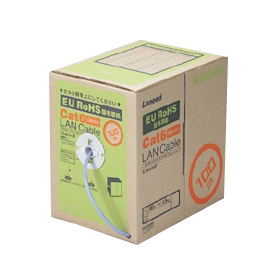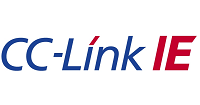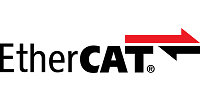(!)NOTE : Windows 7 users won’t be able to use some latest features of eCatalog/WOS since Microsoft is ending support for Windows 7 on 14 Jan, 2020. Please upgrade your system for uninterrupted services.
- Notice of End of Sales for Economy Series Pneumatic Equipment Category. More information.
LAN Cables(Length: Fixed:100 or More )
LAN cable (with connector) is a communication cable for connecting a personal computer and peripheral network devices. As a signal line for sending electrical signals, a stranded wire consisting of eight wires twisted in pairs is generally used to prevent external noise. The signal line is covered with rubber or
LAN cable (with connector) is a communication cable for connecting a personal computer and peripheral network devices. As a signal line for sending electrical signals, a stranded wire consisting of eight wires twisted in pairs is generally used to prevent external noise. The signal line is covered with rubber or plastic, and the connector attached to the tip is used by inserting it into the LAN port attached to each device. STP cables with signal lines protected by a metal shield such as aluminum prevent stronger electromagnetic noise and are suitable for use in noisy environments such as factories. It is also effective to prevent signal leakage from inside, and single shield or double shield can be selected. The categories are divided into CAT6, CAT5e, CAT5, etc. depending on the communication speed, and the higher the number, the faster the communication speed. Cable lengths vary, so choose as needed.
Brand |
|
|---|---|
| CAD |
|
| Days to Ship |
|
1 items
- Sort By
-
You can add up to 6 items per a category to the compare list.

ELECOM
New at MISUMI? Get 20% Discount on your First Purchase. Click to Register Now
[Features]
・ With a separator to prevent signal interference
・ A LAN cable compliant with "Category 6" that guarantees a frequency band of 250 MHz and is ideal for high-speed communication of Gigabit Ethernet
・ It is a single wire specification with little attenuation even over long distances, and it is a cable only type without a connector
・ Reelex box type that is convenient for creating LAN cables of required lengths
・ The cable is not easily entangled and is ideal for small-sized use
・ Compatible with PLC/ADSL/FTTH/CATV/ISDN environments
・ With a remaining length mark that shows the remaining amount of cableCategory Shield Structure Shield Details FA Network Standard Connector Type Cable Conductor Conductor Size No. of Cores (No. of Connection Pins) Cable Outer Diameter Color Length Length: Fixed Length: Custom Cable Feature Sheath Material UL PoE (Power Supply) CAT6 Non-Shielded・UTP - No Standard RJ45-RJ45 Single Wire - - - Blue / Gray / Light Gray Fixed 100 or More - - - - - From: ₹ 13,978.00 Days to Ship: 5 Day(s) or more  5 Day(s) or more
5 Day(s) or more
| Brand |
|---|
| Product Series |
| From |
| Days to Ship |
| Category |
| Shield Structure |
| Shield Details |
| FA Network Standard |
| Connector Type |
| Cable Conductor |
| Conductor Size |
| No. of Cores (No. of Connection Pins) |
| Cable Outer Diameter |
| Color |
| Length |
| Length: Fixed |
| Length: Custom |
| Cable Feature |
| Sheath Material |
| UL |
| PoE (Power Supply) |
You can add up to 6 items per a category to the compare list. | |
| Brand | ELECOM |
| Product Series | |
| From | ₹ 13,978.00 |
| Days to Ship | 5 Day(s) or more |
| Category | CAT6 |
| Shield Structure | Non-Shielded・UTP |
| Shield Details | - |
| FA Network Standard | No Standard |
| Connector Type | RJ45-RJ45 |
| Cable Conductor | Single Wire |
| Conductor Size | - |
| No. of Cores (No. of Connection Pins) | - |
| Cable Outer Diameter | - |
| Color | Blue / Gray / Light Gray |
| Length | Fixed |
| Length: Fixed | 100 or More |
| Length: Custom | - |
| Cable Feature | - |
| Sheath Material | - |
| UL | - |
| PoE (Power Supply) | - |
Loading...
Configure
Specification/Dimensions
-
Category
- CAT7
- CAT6A
- CAT6
- CAT5e
- CAT5
-
Shield Structure
- Non-Shielded・UTP
- Shielded・STP
-
Shield Details
- Single Layer Shield
- Double Layer Shield
-
FA Network Standard
-
 CC-LINK IE
CC-LINK IE -
 EtherNet IP
EtherNet IP -
 EtherCAT
EtherCAT -
 PROFINET
PROFINET -
No Standard
-
-
Connector Type
- RJ45-RJ45
-
Cable Conductor
- Single Wire
- Stranded Wire
-
Conductor Size
- AWG22 (0.32sq)
- AWG24 (0.20sq)
- AWG26 (0.12sq)
- AWG28 (0.08sq)
-
No. of Cores (No. of Connection Pins)
- 4 Core
- 8 Core
-
Cable Outer Diameter
-
Color
- Blue
- Navy
- Pale Blue / Light Blue
- Orange
- Red
- Yellow / Light Yellow
- Black
- White
- Gray / Light Gray
- Green
-
Length
- Fixed
-
Length: Fixed
-
Length: Custom
-
Cable Feature
- Oil-Resistant
- Heat-Resistant
- Flame Retardant
- Flex Resistant
- Small Diameter
-
Sheath Material
- PVC
- LSZH
-
UL
- Cable Compatible / Connector Incompatible
-
PoE (Power Supply)
- Compatible
- Non-Compatible
Related Categories to LAN Cables
FAQ LAN Cables
- Question: What are the different types of LAN cables?
- Answer: The most common types of LAN cables are:
• Cat5e: Supports speeds up to 1 Gbps.
• Cat6: Supports speeds up to 10 Gbps over shorter distances (up to 55 meters).
• Cat6a: An enhanced version of Cat6, supports 10 Gbps over distances up to 100 meters.
• Cat7: Supports speeds up to 10 Gbps with improved shielding for better performance.
• Cat8: Designed for high-speed data centers, supports speeds up to 40 Gbps. - Question: What is the difference between shielded (STP) and unshielded (UTP) LAN cables?
- Answer: • UTP (Unshielded Twisted Pair): Commonly used in home and office environments, it is affordable and sufficient for most networking needs.
• STP (Shielded Twisted Pair): Has additional shielding to reduce interference, ideal for environments with high electromagnetic interference (EMI). - Question: What factors affect LAN cable performance?
- Answer: Several factors can influence LAN cable performance, including:
• Cable type: Higher-category cables (e.g., Cat6, Cat7) generally offer better performance.
• Cable length: Longer cables can introduce signal attenuation and increase the risk of interference.
• Environmental factors: Interference from other electronic devices or poor cable installation can degrade performance. - Question: What is PoE (Power over Ethernet), and do I need a special LAN cable for it?
- Answer: PoE allows both power and data to be transmitted over the same Ethernet cable. Most Cat5e and higher category cables support PoE, so you don't need a special cable unless your devices require higher power output.
- Question: How can I troubleshoot a LAN cable problem?
- Answer: Here are some troubleshooting steps:
• Check physical connections: Make sure the cables are plugged in correctly and securely.
• Test with a different cable: If possible, try using a different LAN cable to isolate the issue.
• Inspect for damage: Look for any visible signs of damage to the cable.
• Try a different port: If you're using a network switch or router, try connecting to a different port.
• Check network settings: Ensure your network settings are configured correctly on your device.










How can we improve?
How can we improve?
Thank you for your time.
Your feedback is essential for our continuous improvement
Privacy Policy
Thank you for your cooperation.
Thank you for your time.
Your feedback is essential for our continuous improvement
Please use the inquiry form.
Privacy Policy